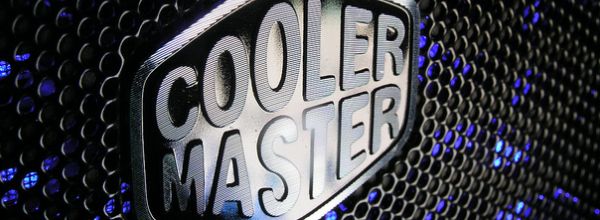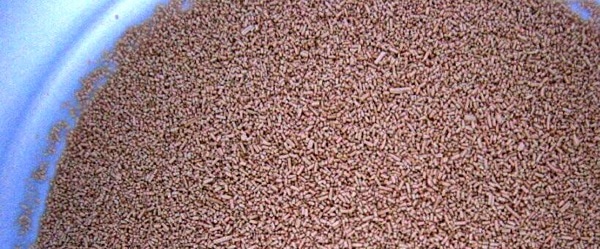Is your goal to purify a substantial amount of a specific protein? Do you have a quantity of a molecule that binds your protein of interest? If so, generating a custom affinity matrix may be just the trick you need to purify your protein of interest by affinity chromatography. Customizing your affinity chromatography is an easy, quick, and often overlooked method for purifying your protein of interest.
What is an Affinity Medium?
An affinity medium is generated when one part of an affinity pair is covalently cross-linked to a stationary phase (matrix) such as agarose or metal beads. The chemistry of an affinity medium is affected by the matrix (bead), the activated chemical group for crosslinking, and the spacer arm between the bead and the activated chemical group. Affinity mediums can be packed into a purification column or used in a 1.5/2 mL microcentrifuge tube for batch purification. An affinity pair can be any of the following:
- An antigen and antibody
- An enzyme and substrate
- A receptor and ligand
Many types of prepared affinity matrices are commercially available.
Examples of Affinity Medium:
| Stationary Phase Ligand | Purified Protein |
|---|---|
| Protein A | IgG |
| Antigen Peptide | Antibody (IgG, IgY, etc.) |
| Antibody | Antigen |
| gelatin | fibronectin |
| GST | GST-Tagged Protein |
| lectin | Sugars/glycoproteins |
| heparin | growth factors |
| Amino acid (aa) | aa binding proteins |
Things you can do with affinity matrices:
- Purify a specific Protein
- Concentrate Protein
- Deplete a Protein from a mixture
- Determine what other substances may bind to a substrate
- Identify potential complexes
- Substrate competition studies
Procedure
As with any procedure, saving an aliquot of each step and running it out on a gel will allow you to monitor the efficiency of the reaction. But this takes time and may be challenging if you are working with small amounts of ligand. Alternatively, measuring the absorbance at 280 nm or performing a protein assay can be quick and sensitive, as long as the specific chemistry you are using doesn’t interfere with the assay (check the product information sheet).
1. Choose your ligand for the stationary phase
In most cases you don’t have choice: It’s whatever molecule you have in a significant amount. If you do have a choice, you may want to consider the dissociation constant for the ligand (best between 10-4 to 10-8 M). If your ligand binds too weakly, you may not have successful purification. If it binds too strongly, you may not be able to your target protein off and end up denaturing your protein to get it off, likely trashing your column.
2. Select the appropriate activated medium for conjugation
After you have examined the chemical properties and amount of your ligand, you must purchase an “activated” gel matrix to crosslink with your ligand. The crosslinking reaction will require certain chemical moieties in your ligand and/or an overall specific charge to the molecule. You should consider how the crosslinking chemistry may affect ligand affinity. For example, if there are lysine residues involved in the interaction between your ligand and its target, you may want opt for an activated medium that does not couple to primary amines.
Due to its gentle coupling chemistry and long-term stability, the most commonly used activated matrix for proteins are agarose beads with NHS-esters (N-hydroxysuccinimide ester). Here is a list of some commercially available activated mediums.
| Medium | Matrix | Crosslinker | Target | Company |
|---|---|---|---|---|
| Affi-Gel 10 | agarose | NHS-ester | primary amines | BioRad |
| UltraLink Iodoacetyl Resin | polyacrylamide | haloacetyl | sulfhydryl groups | Thermo Scientific |
| EAH Sepharose 4B | agarose | carbodiimide | carboxyl groups | GE Healthcare |
3. Prepare your peptide/protein for crosslinking
Begin by making sure that your ligand is not in a buffer that will compete in the crosslinking reaction. For example, if you want to couple purified antibody in a Tris buffer to Affi-Gel beads you have a problem. Tris has an amine that will conjugate to the beads instead of your ligand. If you purchase an antibody from a company they often buffer it in Tris or glycine, totally ruining your chance of an easy coupling with NHS-ester beads.
Should your ligand be in the wrong buffer, dialysis could be used. However, you don’t want to dilute your ligand too much. Take into account the final concentration of your ligand targeting for a final concentration of 1-60 mg/mL.
Don’t forget to save a small amount of your input to check for a difference in concentration before and after crosslinking.
4. Crosslink
More likely than not, your crosslinking will be done in 30 minutes or less. Running the reaction at 4°C is prudent to preserve ligand quality. Using an excess of beads in the reaction will help preserve your overall bead volume during batch purifications, but may increase your elution volume later on.
Save the post crosslinking solution to check for effective crosslinking.
5. Block unbound sites
Once the crosslinking reaction is complete, ensure that all “activated” sites are deactivated by treating them with an overabundance of a reacting group. Check the product sheet for your particular activated medium. For example, with NHS-ester activated medium, you would incubate your beads with glycine buffer for several hours before washing and testing.
6. Optimize Purification and Mass Purify
Once you have a final product, you can test your newly made affinity matrix. You can either pack the beads in a column or place them in a microcentrifuge tube, and add the solution containing the protein you wish to purify. Optimization may be necessary for best purification results. This is beyond the scope of this article, but is easy to find by searching for affinity chromatography.
7. Storage of the custom affinity medium
The last thing anyone wants is to find bacteria living in your bead matrix. As with any protein solution, adding sodium azide to your storage buffer (PBS) at a concentration of 0.2% and storing long term at 4°C will ensure that your beads stay as fresh as possible.
Creativity wins here: if you have a substantial amount of anything you can likely find a commercially available “activated” matrix to crosslink your ligand of interest to, so long as you thoroughly understand the chemistry of the reaction. Considering how relatively cheap making your column can be, you really don’t have much to lose by trying. Always remember: Where there is a will, there is a way! Good luck!!
Take your protein purification game to the next level with our two free eBooks: The Bitesize Bio Guide to Protein Expression and Five Methods for Assessing Protein Purity and Quality.






